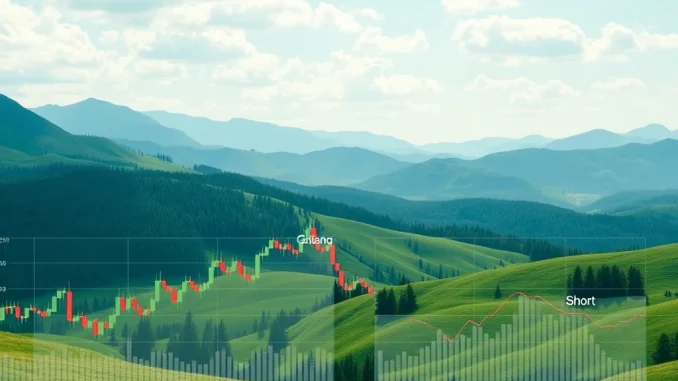
Understanding market sentiment is a key aspect for anyone involved in cryptocurrency trading, especially when it comes to derivatives. The BTC long short ratio provides a direct look into the positioning of traders on platforms offering Bitcoin perpetual futures. This metric shows the proportion of traders holding long positions (betting on a price increase) versus those holding short positions (betting on a price decrease) over a specific period.
Understanding the BTC Long Short Ratio
The long-short ratio is a valuable tool for gauging the prevailing sentiment in the market for Bitcoin futures. A ratio above 1 indicates that more traders are long than short, suggesting a generally bullish bias among futures participants. Conversely, a ratio below 1 suggests a bearish bias. Extreme ratios can sometimes signal potential reversals, as overly crowded positions can lead to liquidations.
Over the past 24 hours, the aggregated BTC long short ratio across major exchanges presented a slight lean towards long positions. Here’s a breakdown of the data:
Total Aggregated Data:
- Long Positions: 51.18%
- Short Positions: 48.82%
Exchange Specific Data:
- Binance: Long 52.23%, Short 47.77%
- OKX: Long 50.62%, Short 49.38%
- Bybit: Long 51.96%, Short 48.04%
What Does This Bitcoin Futures Data Tell Us?
The data reveals that slightly more traders held long positions in Bitcoin futures compared to short positions over the recent 24-hour period. The total ratio of 51.18% long to 48.82% short indicates a marginal bullish preference among futures traders. This sentiment is consistently reflected across major platforms like Binance, OKX, and Bybit, all showing a similar slight majority of long positions.
While this isn’t an overwhelmingly bullish signal, it suggests that despite potential price volatility, the slight edge in positioning favored upward price movement expectations among those trading perpetual futures.
How Crypto Trading Sentiment Impacts Strategy
Monitoring crypto trading sentiment, particularly through metrics like the long-short ratio, can offer valuable context for trading decisions. Traders often use this data in conjunction with technical analysis and other indicators. For example:
- A consistently high long ratio might suggest potential for a ‘long squeeze’ if the price drops unexpectedly.
- A low short ratio could indicate potential for a ‘short squeeze’ if the price rises sharply.
- Changes in the ratio over time can highlight shifts in market conviction.
The current data shows a relatively balanced market with a slight inclination towards longs, suggesting no immediate signs of extreme positioning that might trigger a squeeze based solely on this metric.
Leveraging Perpetual Futures Insights
Accessing and analyzing data on perpetual futures positioning helps traders understand the leveraged market’s pulse. Unlike traditional futures, perpetual contracts have no expiry date, making them popular for continuous trading based on price speculation. The funding rates associated with these contracts can also influence the long-short ratio, as they incentivize positions that align with the dominant market direction.
Accessing Key BTC Market Data
For traders looking to stay informed, tracking BTC market data like the long-short ratio is essential. While this 24-hour snapshot provides a glimpse, observing the ratio over different timeframes (e.g., hourly, 8-hourly) and comparing it across various exchanges can offer a more comprehensive view of evolving sentiment.
Summary: The latest 24-hour BTC long short ratio data for perpetual futures indicates a marginal preference for long positions across major exchanges, reflecting a slightly bullish bias among futures traders. While not an extreme reading, this data point provides valuable insight into the current state of crypto trading sentiment and highlights the importance of monitoring leveraged positions in the Bitcoin futures market.



